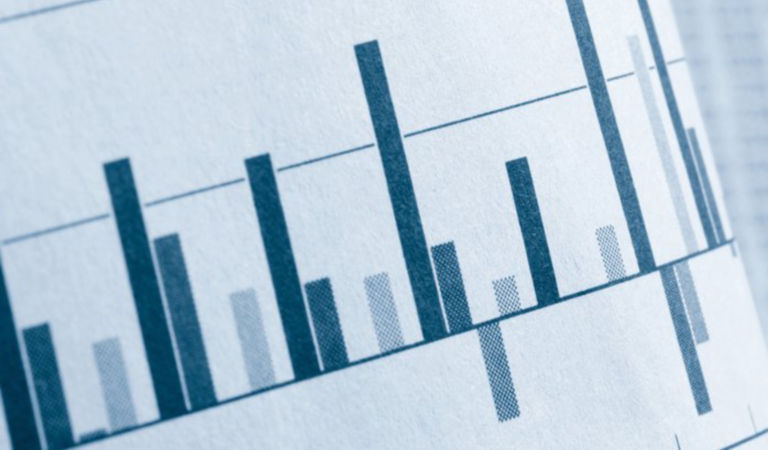Equities
Global equities (+2.5%) rose over the month, ending March with a 7.2% gain year to date. Volatility remained elevated due to geopolitical instability, tighter monetary policy, and a banking crisis that rekindled fears of a global recession. Global central banks coordinated efforts to boost liquidity in the financial system after the collapse of two US regional banks and Credit Suisse rattled financial markets and exposed vulnerabilities in the banking industry. Decisive action by regulators eased liquidity fears, but the turmoil increased the likelihood of more stringent financing conditions in the near term as banks strengthen their lending standards and bolster their liquidity. Major central banks, including the US Federal Reserve (Fed) and the European Central Bank (ECB), continued to raise interest rates in March, but financial stresses and persistent inflation muddied the outlook for interest rates. Positive signals emerged from China’s regulators surrounding the technology sector after Alibaba announced a major reorganization, signaling that a two-year regulatory crackdown on the sector is winding down. To support lending and strengthen the economy’s uneven recovery from the pandemic and a property market slump, the People’s Bank of China (PBOC) lowered the reserve requirement ratio (RRR) for banks by 25 basis points (bps).
US
US equities (+3.7%) finished higher after a volatile month characterized by significant swings in the market’s outlook and risk sentiment. The sudden collapse of two US regional banks drove bank stocks sharply lower, prompting swift policy actions by federal regulators to stabilize liquidity and stem the potential for broader contagion. The turmoil renewed concerns of a US recession and sparked debate about the need for regulatory reform, as markets grappled to assess the health of the banking industry, the course of inflation and interest rates, and the impact of tightening credit standards on business and consumer spending. Strength in the job market and resilient consumer spending complicated the Fed’s task of curtailing persistently high inflation. The core Consumer Price Index (CPI) in February softened slightly to 5.5% year over year, while the Fed’s preferred inflation gauge — the Personal Consumption Expenditures Price Index — climbed 4.6%, matching its smallest increase since October 2021. Furthermore, a sharp deceleration in the Producer Price Index provided hope that inflation will continue to trend lower. Despite considerable uncertainty about the impact of tighter credit conditions on the economy, the Fed opted to raise interest rates by 25 bps to a range between 4.75% – 5%, with the Fed’s median forecast showing a 5.1% terminal rate. Fed Chair Jerome Powell pushed back on views of rate cuts in 2023, although fed funds futures indicated that markets expect the Fed to lower rates by the end of the year.
Economic data released in March showed that the economy was on a solid footing. The labor market remained tight in February amid persistent job shortages. Jobless claims held to near historic lows; nonfarm payrolls exceeded expectations for the eleventh straight month, increasing by 311,000; and higher labor force participation lifted the unemployment rate to 3.6%. However, there were signs of softening labor market conditions as an aggregate measure of weekly payrolls — showing broader changes in earnings, hours worked, and employment — grew at the slowest pace in two years. The strong job market continued to support consumer outlays in February, prompting many economists to boost their economic growth forecasts for the first quarter. Retail sales slowed by only 0.4% after exceptionally robust growth of 3.2% in January, while consumer spending advanced at a modest 0.2% pace following January’s outsized gain of 2.0%. The Conference Board’s Consumer Confidence Index unexpectedly increased to 104.2 in March, suggesting that tensions in the banking industry failed to dent consumers’ economic outlook. After a tumultuous year, the housing market showed signs of stabilizing despite affordability concerns, sharply higher mortgage rates, and limited housing inventory. In February, existing-home sales surged 14.5%, new-home sales surprisingly rose, new-home construction increased for the first time in six months, and pending home sales unexpectedly advanced.
The manufacturing sector continued to slow in March; the Institute of Supply Management (ISM) Manufacturing Index declined to 46.3 in March, from 47.3, with all subcomponents of the index falling into contractionary territory. In contrast, the services sector expanded by more than forecast, with the ISM Services Index edging higher to 55.1 in February. New orders and employment increased by the most in over a year, and companies were mostly optimistic about business conditions thanks to solid demand. A separate preliminary survey from S&P Global revealed that business activity among service providers in March was the strongest since April 2022. The National Federation of Independent Businesses Small Business Optimism Index advanced slightly to a three-month high but remained well below pre-pandemic levels.
Seven of the 11 sectors in the S&P 500 Index (+3.7%) posted positive results. Information technology (+12.1%) was the best-performing sector, driven by software (+14.1%) and technology hardware storage & peripherals (+11.5%). Communication services (+10.4%) rose, led higher by interactive media & services (+16.6%). Consumer staples (+3.9%) was another notable outperformer, as household products (+7.0%) and beverages (+4.8%) groups contributed to returns. Financials (-7.3%) was the worst-performing sector, driven by banks (-18.0%) and capital markets (-7.3%). Real estate (-1.4%) and materials (-1.0%) also underperformed during the period.
Europe
European equities (+0.3%) ended slightly higher. Stocks recovered their losses from earlier in March after upheaval in Europe’s banking sector stabilized following an orchestrated takeover of Credit Suisse and reassurances by European leaders and policymakers that the region’s banks are stable. Europe’s central banks, including the Bank of England (BOE), the Norges Bank, and the Swiss National Bank continued to raise interest rates. The ECB lifted rates by 50 bps — its sixth consecutive hike — indicating that it will take a data-dependent approach to future policy decisions due to elevated uncertainties about inflation, economic growth, and the impact of tighter credit conditions and higher interest rates on demand. Eurozone headline inflation subsequently fell to 6.9% year over year in March, from 8.5% in February, entirely due to a drop in energy prices. However, growth in services sector prices drove core inflation up slightly, to a record high of 5.7%, and eurozone labor costs accelerated to 5.7% in the fourth quarter, adding further impetus for the ECB to pursue a more restrictive policy. The European Commission published a proposal to reform Europe’s electricity market, with measures to prevent severe price spikes and accelerate the use of renewables.
Europe’s manufacturing sector continued to contract in March as the eurozone Manufacturing Purchasing Managers’ Index (PMI) slipped to 47.3 in March, from 48.3 in February. Demand remained on a downward trend, while supply chains continued to improve, input costs fell for the first time in three years, and sales prices rose at a slower pace. The preliminary eurozone Composite PMI for March showed that eurozone business activity accelerated to a 10-month high, driven entirely by the services sector, which registered its strongest expansion since last May. Although the overall rate of growth was modest, the encouraging result suggested that the economy is weathering the impact of higher interest rates. Eurozone consumer confidence held firm near its highest level in more than a year, but industry confidence lost momentum amid lower production expectations.
In Germany (+1.5%), the ZEW Indicator of Economic Sentiment snapped a five-month streak of gains, as sentiment tumbled in March amid worries that bank lending will become more restrictive. This contrasted with an unexpected rise in the Ifo Business Climate Index, which indicated that German business morale continued to improve. In the UK (-2.7%), better-than-anticipated public finances allowed Chancellor Jeremy Hunt to unveil a more growth-oriented budget, but his plans to bolster business investment and the labor force face constraints from a tough fiscal backdrop and high inflation. The composite PMI remained in expansionary territory, offering hope that a recession can be avoided in the near term. The UK and European Union agreed on a new deal on post-Brexit trading arrangements for Northern Ireland. In France (+0.7%), the government narrowly survived a no-confidence vote after its controversial pension reform bill sparked widespread protests.
Pacific Basin
Pacific Basin equities (+1.4%) finished higher. Australia’s (+0.1%) economy faced headwinds from rising interest rates, cost-of-living pressures, and weak consumer and business confidence. The Reserve Bank of Australia (RBA) lifted interest rates by 25 bps in March, to 3.6%, but its dovish policy statement suggested that the rate-hiking cycle could be nearing an end. A greater-than-expected deceleration in inflation strengthened the case for the RBA to pause rate hikes, as the core CPI in February cooled for the second consecutive month to an eight-month low of 6.9%. Consumer confidence remained at a historically low level in March, with intentions to purchase big-ticket items notably weak. Retail sales growth slowed to 0.2% in February, further evidence that high interest rates and inflation were weighing on consumers. However, job growth of 64,600 surpassed expectations and drove the unemployment rate down to 3.5%, underscoring the labor market’s strength and resilience to an aggressive policy tightening cycle.
Japan (+1.8%) narrowly avoided recession after annualized GDP growth in the fourth quarter was revised down to 0.1% amid weak consumer spending. The result was significantly below forecasts, underscoring the fragility of the economic recovery. In February, industrial production rebounded more than expected, rising 4.5% year over year after a drop of 5.3%, while retail sales grew for the third straight month. Inflation slowed for the first time in more than a year as core consumer prices decelerated to 3.1% year over year in February. However, government energy subsidies masked a stronger underlying trend of rising prices, adding pressure on the Bank of Japan (BOJ) to tweak its yield curve control policy. Japanese real wages declined by 4.1% year over year in January, the largest drop since 2014. Incoming BOJ President Kazuo Ueda stressed that stronger wage growth must accompany price growth for inflation to sustainably meet the bank’s 2% target. The country’s largest employers agreed to raise wages by the most in a quarter century during spring negotiations in March, although the compensation outlook for workers at smaller companies (70% of Japan’s workforce) appeared less optimistic, as companies struggle to pass on higher prices to consumers. The Japanese government is set to allocate more than 2 trillion yen (USD 15.1 billion) in additional aid to ease the impact of high inflation on households ahead of local elections in April.
New Zealand’s (+2.4%) trade deficit widened, and the economy contracted more than expected in the fourth quarter of 2022, putting the country on the brink of recession. GDP fell 0.6% from the third quarter, worse than estimates of a 0.2% drop, prompting markets to anticipate a slower pace of interest-rate hikes in April. Hong Kong’s (+1.2%) trade deficit widened as exports slumped for the tenth straight month due to deteriorating foreign demand. In Singapore (+3.9%), the Ministry of Trade and Finance maintained its GDP growth forecast of 0.5% – 2.5% for 2023 despite slowing manufacturing output, which declined 8.9% year over year in February amid weak demand in several key markets, notably the US and Europe.
Emerging Markets
Emerging markets (EM) equities (+2.2%) rose amid strength in China and a weakening US dollar. Within EM, Asia outperformed Europe, the Middle East, and Africa (EMEA) and Latin America.
Asia (+3.0%) was led higher by China (+4.3%), where equities were bolstered by favorable views on the country’s growth prospects, signs of improvement in the real estate sector, accelerating consumer spending, and supportive regulatory decisions from the government, particularly in the technology sector. In March, the services sector expanded at the fastest pace in more than a decade, but a dip in the manufacturing PMI signaled an uneven economic recovery. The real estate sector showed signs of stabilizing, with prices rising and home sales sharply rebounding. The central bank cut the RRR by 25 bps to support lending. South Korea (+3.2%) benefited from increased mobility in China and signs of improving relations with Japan following a long-standing labor dispute between the two nations. The country’s economic recovery showed mixed signals, as industrial production continued to decline and retail sales rebounded sharply after three months of contraction. Taiwan (+3.0%) pushed higher despite heightened geopolitical tensions, exacerbated by President Tsai Ing-wen’s visit to the US.
In EMEA (-0.1%), Eastern European markets fell amid banking upheaval and a flight to safety. In South Africa (+0.0%), the central bank surprised markets with a 50 bps hike in interest rates after an uptick in inflation signaled that recent power cuts may be fueling higher prices. The manufacturing PMI fell into contraction as the lagged effects of higher interest rates began to surface. The country’s outlook was downgraded by S&P, reflecting higher risks and greater pressure on economic growth from severe electricity shortages and the slow pace of government reforms. Saudi Arabia (+5.8%) advanced amid optimism around improved relations with China.
In Latin America (-1.6%), Brazil (-3.1%) declined, with the central bank holding interest rates steady at 13.75% due to higher inflation expectations. The move came despite intense pressure from President Luiz Inácio Lula da Silva to lower borrowing costs. Brazil’s economy stagnated in the fourth quarter amid shrinking industrial output and moderating services activity, underscoring the economic challenges that President Lula faces in his efforts to boost living standards and reduce poverty. Mexico (+1.5%) ended higher as core inflation slowed more than anticipated in February. In tandem with the Fed, the central bank slowed its pace of rate hikes to 25 bps and signaled a dovish view on future rate moves. In Chile (-5.1%), higher core inflation reduced the likelihood for a near-term rate cut. The Chilean Congress rejected President Gabriel Boric’s flagship tax legislation, dealing a setback to reform prospects, and increasing fiscal uncertainty.
Fixed Income
The sudden turmoil in the global banking system weighed heavily on most fixed income sectors, which underperformed duration-equivalent Treasuries as spreads widened, although the decline in sovereign yields benefited total returns. Major central banks remained focused on reining in inflation despite tumult in the banking industry.
US economic data releases were mixed, underscored by dampening consumer sentiment amid destabilization of the banking sector and dimmed economic expectations, according to the University of Michigan’s Consumer Sentiment Index. The labor market remained tight, while personal spending and income grew at a slower pace. Retail sales showed declines in most categories. Declining transportation equipment demand, particularly for civilian aircraft, weighed down durable goods and factory orders. Industrial production missed consensus estimates amid weak domestic and overseas demand and increasing interest rates, while the ISM Services Index remained elevated on improving new orders and employment. New- and existing-home sales rose as buyers took advantage of the first drop in house prices since 2012. In the eurozone, core inflation rose to a record high, while consumer confidence edged lower. Industrial production advanced, owed mainly to expanding capital goods output. Germany’s IFO business climate index advanced on optimism about easing energy costs. In the UK, retail sales surged to pre-pandemic levels, but higher inflation continued to pressure consumers amid rising food and energy prices. China’s industrial production grew at a slower pace than anticipated on weaker mining and utilities activity. Japan’s industrial production rose as easing semiconductor shortages supported growth in vehicle production. Canadian housing starts advanced on rising urban construction of single- and multi-family housing. In Australia, the unemployment rate dropped due to strong hiring, particularly in the Southeast regions.
Most major central banks delivered rate hikes in line with consensus expectations. The Fed increased policy by 25 bps and projected another hike. The ECB raised rates by 50 bps, reiterating that inflation remains too high, while the BOE, RBA, and Norway’s Norges Bank implemented hikes of 25 bps. The BOJ left policy unchanged.
Most global sovereign yields fell as disruptions in the global banking system precipitated a flight to safety and a dovish repricing of the fed funds rate. US yields declined as markets priced in Fed rate cuts in 2023, even as inflation remained well above target and economic activity appeared resilient amid upheaval in the banking sector. Most eurozone and UK yields declined. Australian yields declined as dovish minutes from the RBA meeting revealed that policymakers were ready to consider a pause in the tightening cycle. The Bloomberg TIPS Index provided a total return of 2.89%, and the 10-year breakeven inflation rate decreased by 6 bps, to 2.32%, during the month.
Global credit bonds underperformed duration-equivalent government bonds as spreads widened. Within the securitized sectors, agency mortgage-backed, commercial mortgage-backed, and asset-backed securities underperformed duration-equivalent government bonds. Within EM, local markets debt (+4.12%) outperformed external debt (+0.96%), in US-dollar terms. Spread widening hurt results within external debt, while a decrease in US Treasury yields had a positive impact. EM currencies appreciation drove positive performance in local markets, and movement in EM rates also helped results.
Currencies
The US dollar declined versus most major currencies, as financial stability fears eased by the end of March following prompt action by global regulators and policymakers. In the G10, the Swiss franc outperformed; the Swiss National Bank promoted franc strength by selling foreign currency reserves to ward off imported inflationary pressures. The euro rallied, supported by an upside surprise in eurozone core inflation, hawkish rhetoric from the ECB, and assurances from policymakers that the financial system remained stable. The Japanese yen benefited from flows to perceived safe-haven assets amid concerns about systemic risks in the banking sector. The Norwegian krone declined despite better-than-expected retail sales and hawkish comments from the Norges Bank. The Australian dollar also ended lower. Most EM currencies rallied versus the US dollar, with many central banks hiking rates to counter inflation.
Commodities
Commodities (-1.1%) declined for the fifth straight month, led lower by energy (-3.5%). Gasoline (+2.3%) rose, with the US Energy Information Administration’s petroleum supply report revealing a much larger-than-expected drawdown in gasoline, which moved stockpiles closer to multiyear lows ahead of the peak summer driving season. Crude oil (-2.4%) declined amid mounting speculation that weakness in the banking system could spark a recession, prompting investors to cut bullish positions in US crude by the most in more than a decade. Heating oil (-4.5%) and gas oil (-6.7%) ended lower on concerns about a potential US recession, pressure from mild weather, and resilient Russian flows, which helped to avert major supply strains over the winter. US natural gas (-23.2%) extended its declines as ample stockpiles and warm weather continued to keep a lid on prices at the end of the winter.
Industrial metals (+0.3%) finished slightly higher after losses spurred by the banking crisis evaporated as the market unrest faded. Aluminum (+1.5%) benefited from improving demand in China and expectations for less restrictive Fed policy. Copper (+0.7%) rose on signs of tighter concentrate supply and improving market sentiment due to waning bank turmoil. Lead (+0.5%) ended higher after worries about bank stresses eased and the US dollar weakened. Zinc (-2.1%) was down due to anxiety about greater supplies, while Fed rate hikes continued to weigh on demand prospects for the base metal. Nickel (-3.8%) was driven lower by concerns about China’s modest economic forecasts and the financial sector tumult that clouded the longer-term global economic outlook.
Precious metals (+8.3%) rose sharply after investors sought refuge in perceived safe-haven assets due to recession and banking fears. Silver (+15.1%) and gold (+7.6%) surged following the collapse of two US regional banks and Credit Suisse.
Agriculture & livestock (+2.1%) ended the month higher. Sugar (+11.3%) registered its largest gain since 2021 on tighter global supplies; India — the world’s second largest exporter — cut shipments after rains hurt cane crops, and the country also diverted more sugar toward the production of biofuel. Cocoa (+5.6%) was bolstered by a weaker US dollar and reduced supplies from Côte d’Ivoire. Corn (+5.2%) advanced after sentiment improved following larger Chinese purchases of the US crop. Feeder cattle (+2.6%) and live cattle (+1.6%) ended higher due to tightening supplies. Soybeans (+2.2%) climbed amid lower global supply prospects; the US Department of Agriculture cut its estimate for domestic stockpiles to the lowest level in seven seasons, below market expectations. In addition, Argentina’s Rosario Board of Trade forecast the country’s worst harvest in 15 years, describing the ongoing drought as “unprecedented in modern agricultural history.” Wheat (+1.8%) ended higher on concerns that drought and cool temperatures could shrink US crop yields in Kansas and other major producing states. Cotton (-1.1%) was weighted down by heightened economic uncertainty and slowing global demand. Coffee (-8.1%) ended sharply lower, primarily due to recession concerns, while lean hogs (-8.4%) were dragged down by sluggish demand and a rush to slaughter herds following a resurgence of African swine fever.














Monthly Market Review — February 2025
Continue readingBy
Brett Hinds
Jameson Dunn